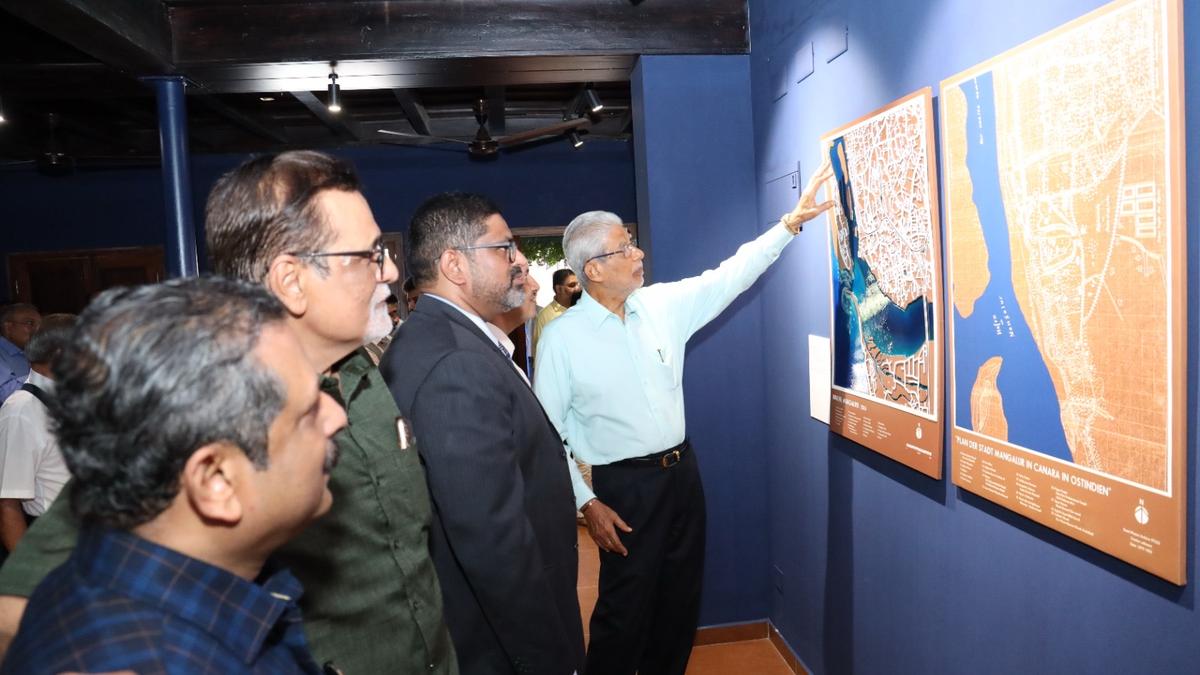
A peek into the trade history of Bunder at KCCI office
The Hindu
Explore the rich trade history of Mangaluru's Bunder through a gallery showcasing the city's diverse cultural heritage.
A gallery showcasing the trade history of Bunder in Mangaluru was opened at the office of Kanara Chamber of Commerce and Industry (KCCI) here on Monday.
‘Spaces of Memory’ displayed at the gallery giving information on the trade history of Bunder said that Mangaluru is witnessing exponential development in the 21st century, led by the Special Economic Zones, IT parks and start-up hubs, attracting thousands of aspirants as well as global investors. While the city explores newer frontiers, Mangaluru’s built heritage in trade plays a silent yet crucial role in amplifying this growth. At this very juncture, the gallery remains a timely retelling of Mangaluru’s past, providing a learning opportunity for its reflection over the present, and a tribute to all those makers of its past, present and future.
It said Mangaluru of the Kannadigas, Kudla of the Tuluvas, Kodial of the Konkanis, Mangalapuram of the Malayalis or Mykala of the Bearys — every community’s affinity to the ancient port town is reflected in them calling it their home. The Konkanis, migrating from Goa about 400 years ago, settled in Mangaluru and prospered on the banks of the confluence of Netravathi and Gurupura.
The Kutchi Memons and the Dawoodi Bohras of Gujarat, who settled in Mangaluru dealing in areca nut and salt, today give the locals a run for their money in spoken Tulu and Kannada. The Jewish trader of the 12th century, Abraham Bin Yiju, called Mangaluru his home for 17 years, trading with various communities in the port-town. The natives comforted, welcomed and provided ample space for each of the communities. While they settled in carefully characterised localities around their brethren, the communities came together in the Bunder — the band (enclosed) and da (gate, door) derived from Persian for a forted port — While the kings, sultans and emperors clashed over the control of the port and thrived on its trade, the communities, overcoming their socio-cultural differences, stood together and celebrated each other’s achievements.
These strong bonds of coexistence cemented Mangaluru as a prominent maritime junction, where the merchants from across the world stopped for pepper and coffee, brought down the ghats along the “great and very fair” inland river.
Giving an overview of the gallery during the inauguration, Niren Jain, architect of the gallery project, said there is historical evidence to show that Bunder was a cosmopolitan port for many centuries.
Mr. Jain said that the excavation for the New Mangalore Port half a century ago revealed a hoard of 270 coins of Vijayanagar kingdom, including gold ‘Varaha’ and copper coins.











